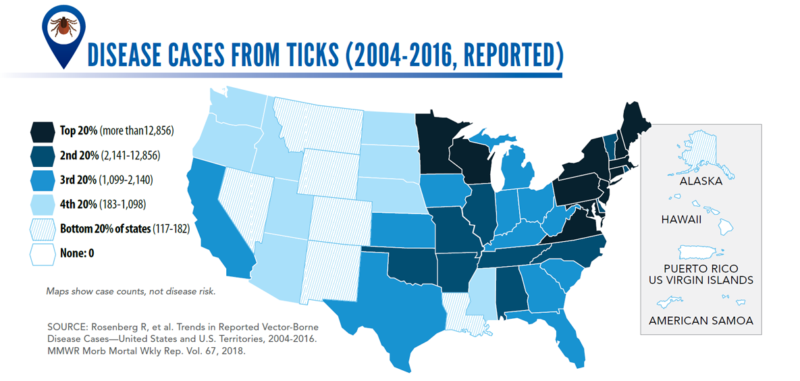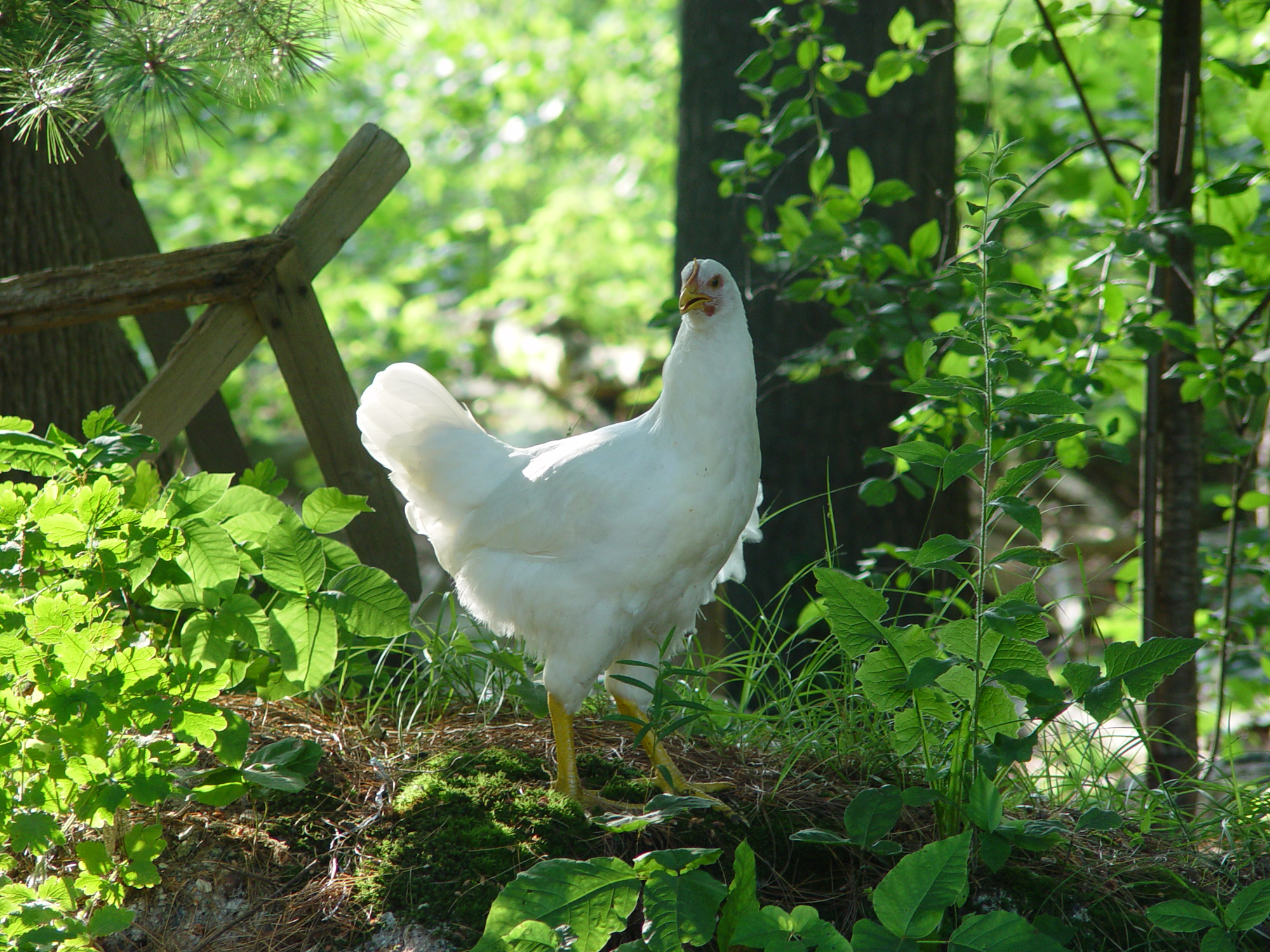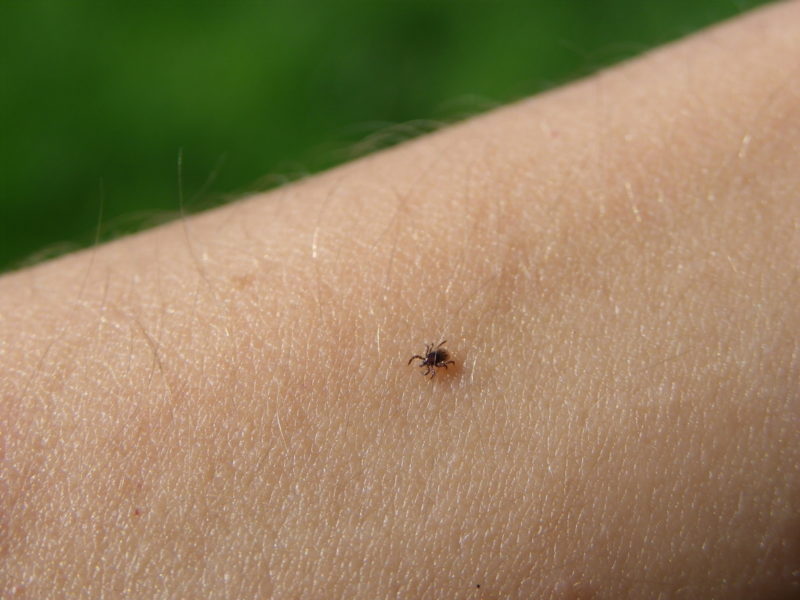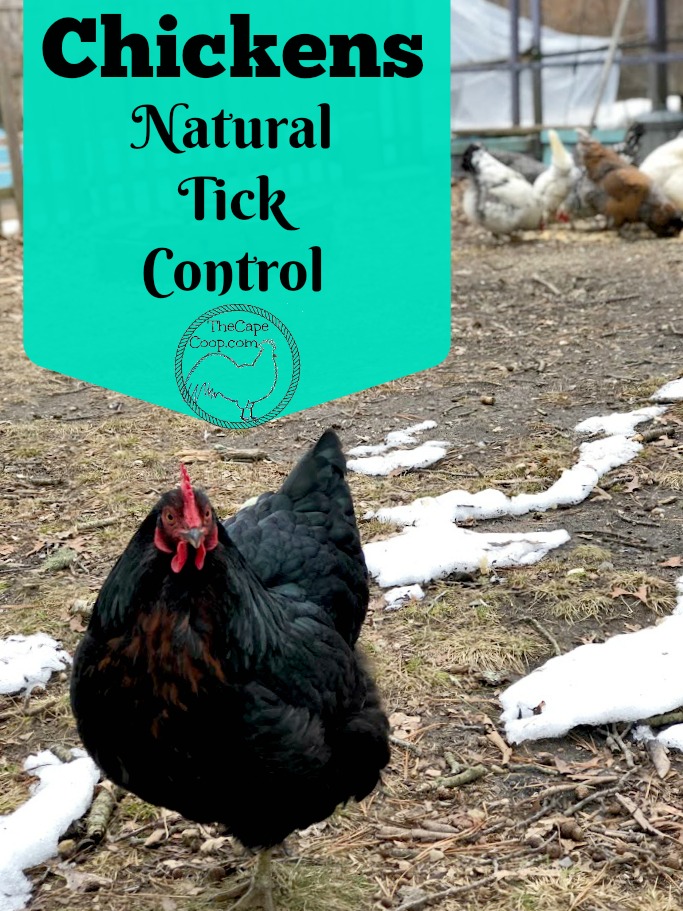---------------------------------------------------------
Summer is right around the corner! As the weather warms up and we start to spend more time outdoors, the insects of the world are also waking up, ready for a meal. Experts suggest in the coming years we could be in for a “tick explosion”.
According to a recent release from the Center for Disease Control, the number of people contracting diseases from mosquitoes, ticks, & fleas has more than tripled in the United States since 2004. Disease cases from tick bites alone have doubled and account for 60% of all the disease cases.
Ticks are now known to cause over a dozen different diseases including Lyme Disease, Rocky Mountain spotted fever, Powassan disease, and Heartland virus disease. It is estimated nearly 300,000 people contract Lyme Disease annually in the US.

So why the up-tick in tick borne diseases? There is no easy explanation, but some experts have theorized that rising global temperatures are allowing insect populations to grow, extend their seasons, and spread to areas where they previously could not exist.
As humans continue to expand suburbia, the natural habitat for predators like foxes and wolves shrinks. Without those natural predators, deer & rodent populations are booming. Rodents & deer are tick’s preferred meal, so with more available food, the tick population is growing too.
Chickens to the rescue!

There are several things you can do to keep yourself & your family safe from ticks. One great, natural solution is to introduce a predator who loves to eat ticks.
Despite what tv commercials for industrial chicken farms tell you, chickens are not meant to live on “all vegetarian feed”. Chickens are omnivores and healthy, happy chickens ideally spend their day foraging for bugs. A flock of chickens, allowed to free range, can significantly reduce the amount of ticks, mosquitoes, and fleas in your yard.
A good portion of my yard is wooded and I live in the northeast US where nearly 95% of Lyme Disease cases occur. Ticks are unfortunately just a part of the summer months here. Once we started allowing our chickens to free range, the amount of ticks we find on the dogs and ourselves has gone down to almost nothing.
A scientific study was done in 1991 to determine the effect of chickens on tick populations. In the study, a flock of chickens was allowed to free range in a tick infested cattle field for 30-60 minutes. It was found that each chicken ingested anywhere from 3-331 ticks, with the average chicken eating over 80 ticks!
While chickens can be a great asset in keeping your family safe from ticks, they shouldn’t be your only precaution. They won’t eliminate every single pest from your yard but you will definitely see a significant decrease. And of course, they can’t help keep your family safe while you are having summer fun away from home!
Other steps to decrease tick bites
Further steps you should take to keep your family safe from ticks:
Use EPA registered bug spray on both exposed skin and clothing
Wear long sleeves & long pants while hiking in deep woods or near long grass. Tuck pant legs into socks
Use flea and tick treatments on your pets
Keep your grass cut short, ticks love hiding in tall grass
The most important step! Check your pets, kids and yourself for ticks every day. Ticks like damp, dark areas like armpits. The sooner you remove a tick, the better. Ticks attach themselves and feed on your blood until they become engorged. When they are done feeding, they regurgitate a little and that is what spreads the disease. Generally, a tick needs to be attached for more than 24 hours for this to happen.
Removing ticks
To remove a tick, grasp the tick as close to the skin as possible, you don’t want to squeeze the body and encourage regurgitation. You also want to be sure you get the entire tick and the head doesn’t get left lodged in your skin.
The best tool to remove a tick with is a Tick Twister. It’s a little claw like tool that you twist around the tick and pops it off. No squeezing or pulling. If you don’t have a Tick Twister, a sharp pair of tweezers will also work. Flush the tick down the toilet, if you just toss it in the garbage it will climb out. They are determined little suckers!
So bottom line – don’t let ticks ruin your summer. Be smart and keep your family safe. Consider letting your birds free range for some natural pest control (and some happy hens!)








Alicia
Tuesday 23rd of June 2020
Thank you very much for this information, Liz!
Alicia
Thursday 18th of June 2020
Do you happen to have info on how to figure out how many chickens one needs for adequate tick control?
Liz
Friday 19th of June 2020
There are so many variables to this it would be hard to answer. It will depend on how dense your tick population is, the breed of chicken you have, the size of your yard, and how long they are allowed to free range each day. If you are looking to add chickens for tick control, look for heritage breeds. Chickens that have great foraging skills will be better at eating ticks than hybrid production breeds.
Robert Priestley
Wednesday 29th of April 2020
Tick collection tray is an old large ashtray. Tick come off in tweezers, gets snipped through with sharp scissors head to abdomen, Full ashtray of tick halves disposed of in a single flush, no crawl backs.
Adrienne
Monday 23rd of July 2018
Sign me up for a chicken coop!
Liz
Tuesday 24th of July 2018
The cutest bug control in the world!
Liz
Tuesday 12th of June 2018
Great idea! They are super crafty little monsters!